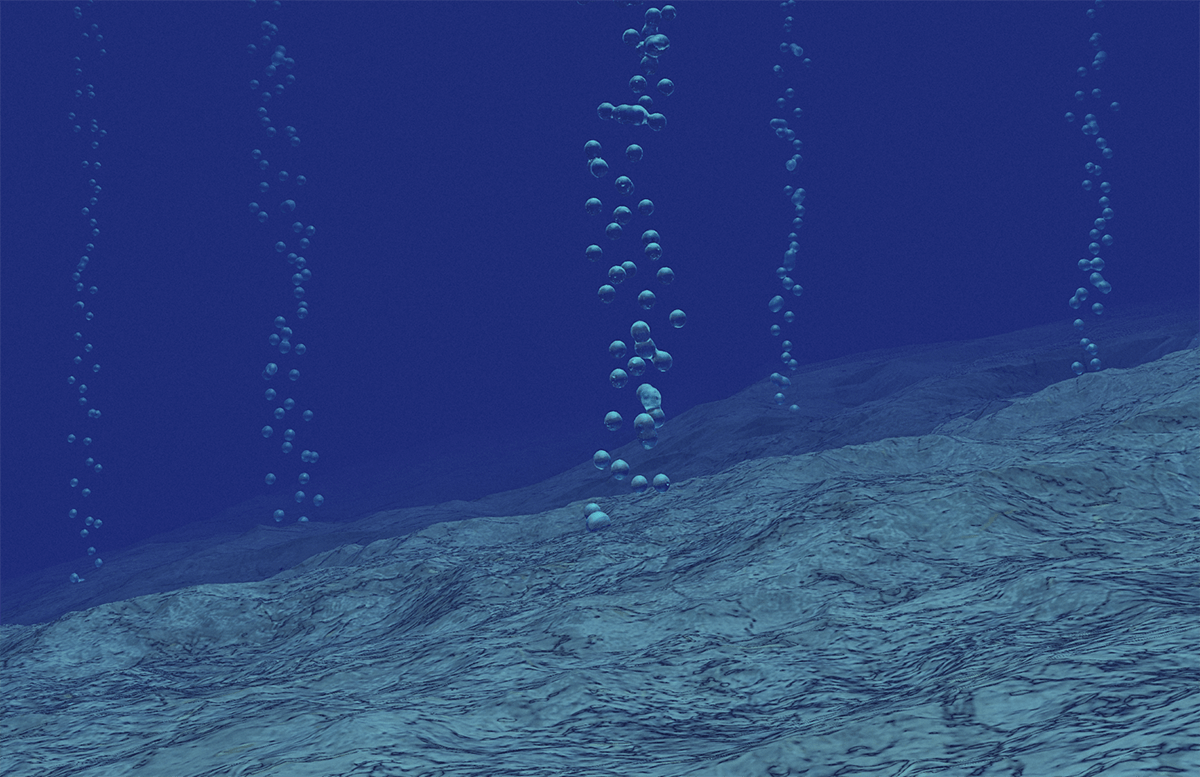According to a study performed by two researchers from Texas A&M University, sediment cores gathered from the Southern Ocean dating back 23 million years are offering better insight into how ancient methane escaping from the seafloor could have resulted in regional or global climate and environmental variations.
 Methane gas bubbles rising from the ocean floor. Image Credit: Justin Kim.
Methane gas bubbles rising from the ocean floor. Image Credit: Justin Kim.
Yige Zhang, assistant professor in the Department of Oceanography at Texas A&M, and doctoral student Bumsoo Kim published their work in the Nature Geoscience journal.
The oceanographers analyzed cores — sediment samples obtained from deep parts of the ocean floor — from the Oligocene–Miocene era, around 23 million years ago, from areas next to Tasmania and Antarctica in the Pacific sector of the Southern Ocean.
Billions of tons of carbon have been stored below the ocean floor as gas hydrates, which are ice-like crystals made of natural gas and water. Past releases of methane are thought to be connected to huge earth events, like global warming and climate shifts.
For a long time, people thought that methane released from the ocean floor could go into the atmosphere and directly contribute to the greenhouse effect, leading to rapid warming and even mass extinctions. But this idea is no longer popular in the last decade or so because we lack direct evidence of methane release in Earth’s history. Also, modern observations show that even when methane gases are released, they rarely make it to the atmosphere.
Yige Zhang, Assistant Professor, Department of Oceanography, Texas A&M University
But Kim and Zhang are currently able to record past methane release by utilizing markers that use methane. According to scientists, these “methane-eating” substances are retained in sediments for tens of millions of years. They could offer direct proof of methane release from various places in the Southern Ocean.
We saw that a methane release occurred during a peak glaciation about 23 million years ago.
Yige Zhang, Assistant Professor, Department of Oceanography, Texas A&M University
Glaciation is the formation, movement and recession of glaciers, and the majority of the common occurrences of the process are in Greenland and Antarctica. When there is a formation of large ice sheets, they pull in an enormous amount of water that could decrease sea level by tens to hundreds of feet.
According to Zhang, the methane gas release and its after-effects resulted in ocean acidification and hypoxia (absence of oxygen in the water). This is a phenomenon that has been noted after the Deepwater Horizon incident in 2010 when huge amounts of methane were released in the Gulf of Mexico.
One implication of our study is that if gas hydrates start to decompose in the future due to ocean warming, places like the Gulf of Mexico could suffer severely from ocean acidification and expansion of the low oxygen ‘dead zones.
Bumsoo Kim, Doctoral Student, Texas A&M University
The project was financially supported by Texas A&M’s T3 grants and Texas Sea Grant.
Journal Reference:
Kim, B. & Ge Zhang, Y. (2022) Methane hydrate dissociation across the Oligocene–Miocene boundary. Nature Geoscience. doi.org/10.1038/s41561-022-00895-5.